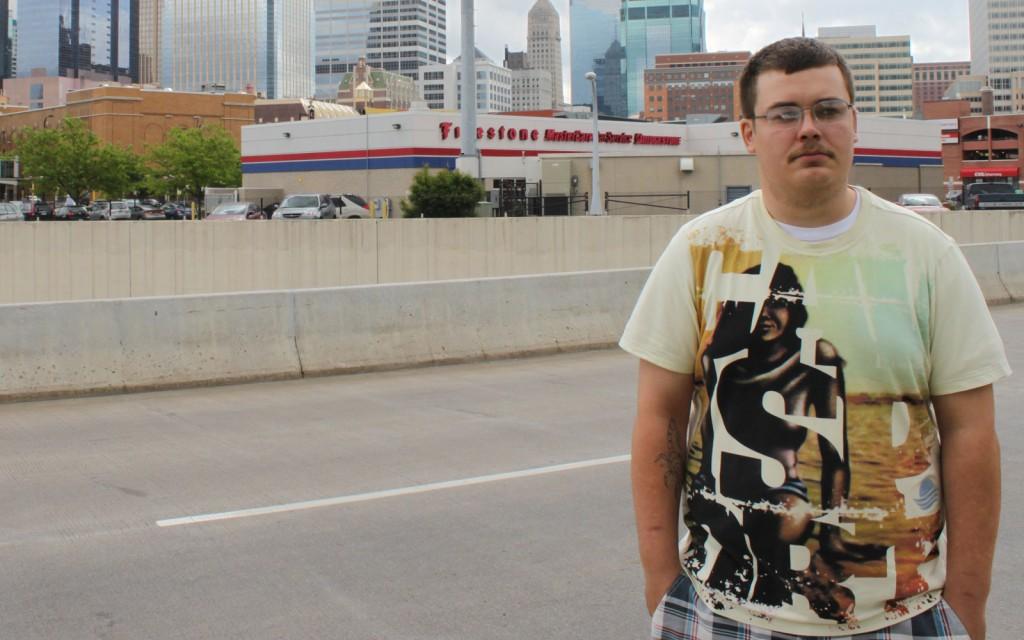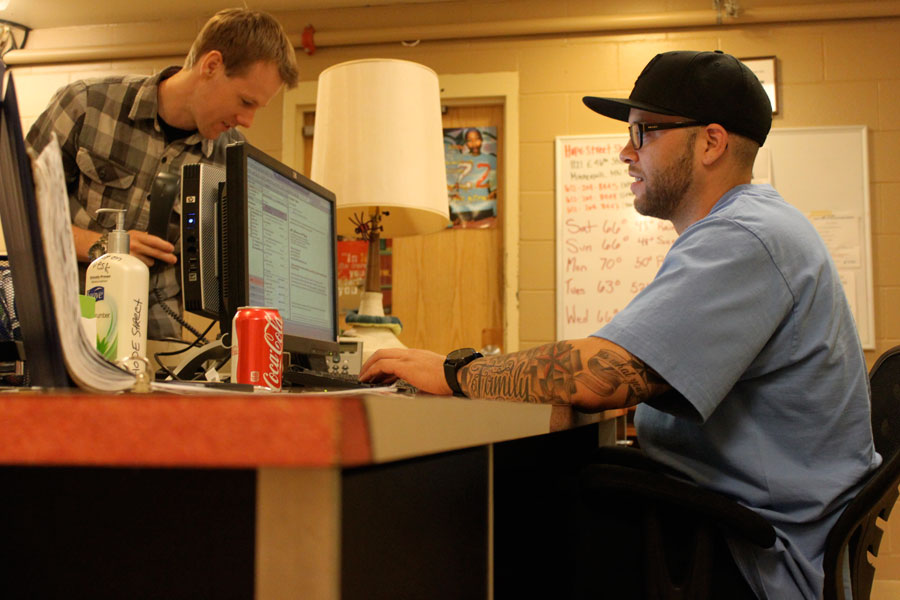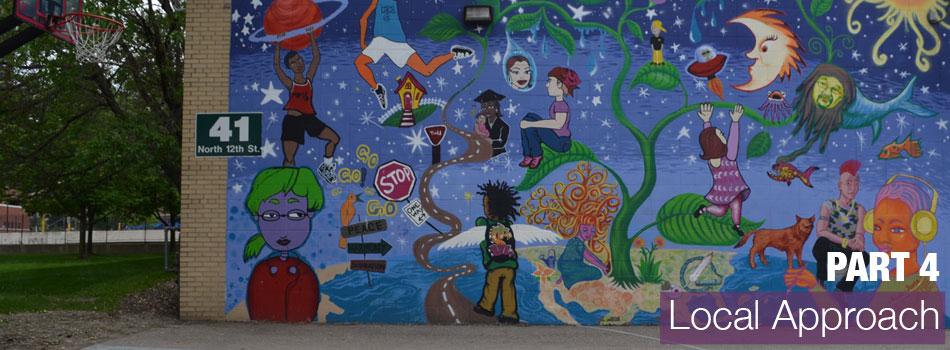Part 4: Homeless Youth
“One of the greatest threats to our civilized society is that we accept homelessness as inevitable,” said Christine Martin, the Vice President of the Wilder Foundation. These four organizations choose to not accept that inevitability. The Bridge, the Suburban Host Home Program, YouthLink, and Hope Street, all located in the Metro area, take substantial steps to aid Minnesota’s homeless youth population.
May 31, 2013
The Bridge in South Minneapolis blends in with the apartment buildings found right off Hennepin Avenue, but blocks away, mansions dot Lake of the Isles Parkway. This contrast creates a stark real-life image of the somewhat overused phrase: “the problems in our own backyard.”
The Bridge operates under a family reunification model, in which incoming teens meet with family members and guardians soon upon arrival in an attempt to place the child back in the home. Under this model, those who care about the youth have an active role in the future of the child. “We use a strength-based approach, the family has the tools to fix their situation, the family is the best environment for this child to grow up in,” Clow said.
Clow knows that often for single parents without the support of their own parents, sisters, or brothers, raising a teen can be overwhelming. “As a community in the state of Minnesota, [it would help] if we were to acknowledge a little bit that it takes a village…I think intervention and prevention is the way to ending cycles of homelessness,” Clow said. The cycles Clow mentions are clearly proved as there are many kids at The Bridge whose parents also frequented as teenagers.

At The Bridge, the shelter in a house across the street provides the primary programming as “the beehive” of the organization. When a teen shows up at The Bridge, an extensive assessment is done to best meet his or her needs. “The whole program is based on assessing client needs, what are the client’s needs around health and emotional well-being,” Clow said.
Clow, however, does recognize the complexity of the issue. “Have you ever seen Shrek? Well it’s like an onion; it’s such a layered thing,” Clow said. These layers include poverty, mental health and chemical health issues, privilege, diversity, LGBT identification, and that merely scratches the surface.
Organizations can only aid teens to a certain point; from there, the teens must overcome the mental scars on their own, find their own motivation, and work to accomplish their own dreams. The Bridge works to provide resources and support, but in the end, the driving force comes from each teen. “I don’t think we give kids anything; we help them find strength within themselves,” Clow.
For some, integration into a sort of foster home is the best solution. Jenny Lock is the coordinator for the Suburban Host Home Program, which is one of the only housing programs for youth in the suburbs. “The point is that those youth are still able to stay at their same job and school, and near their network of support,” Lock said.
Homeless teens in the suburbs face an additional set of challenges. Transportation and access to resources are harder to come by, and due to this, many homeless teens in the suburbs are forced to move to the city to get housing. In doing this, they must leave behind friends at school, their support system, everything familiar to them. The Suburban Host Home program aims to help suburban teens remain connected with their social groups and support systems and to also stay in a home environment.
Though the program has only housed a few teens so far, success already is apparent. One teen in a host home in Brooklyn Center has been with her host for 14 months, has graduated from high school and is in her second semester of community college. She has a job that she loves, saved up and bought a car, and is getting ready to move into her own apartment. “It is really exciting to see that youth can really be successful,” Lock said.
The program not only helps homeless teens in the suburbs, but it is also incredibly rewarding for those who open their homes to the struggling youth. “One of the things that I hear regularly from hosts is that the experience has given them a new perspective on life,” Lock said. The program allows the host families to learn from someone who has had far different experiences than them, and gives them the fulfilling opportunity to provide basic needs for someone else.
Founded in 1974, YouthLink is a drop in center for youth with a variety of resources ranging from meeting basic needs to case management to GED tutoring. YouthLink has over 30 partners with the community that come to the building to offer services: doctors have clinic hours, lawyers offer legal services, and job recruiters present employment opportunities. “They actually get all of their needs met and don’t need to be shipped off to a bunch of other places,” Siddiqui said.

YouthLink accepts youth ages 18-23 in the morning with the focus of connecting them with job services and ages 16-20 in the afternoon to support these teens who are homeless but are often still in school.
Siddiqui touches on the necessity of keeping an open mind. “I cannot judge these kids by what they look like; we don’t have any idea what their circumstances are, have been, or could be,” Siddiqui said. Each case is vastly different––each youth has different trauma and different ways of coping with it. YouthLink’s variety of services helps meet the specific needs of each teen, whether it be coping with emotions through art, working with an adult to determine their course of action, or speaking with a formerly homeless teen about the emotional and psychological challenges that need to be overcome.
YouthLink focuses on providing a sense of community for homeless teens, who often lack this sense of belonging. “I feel like most importantly YouthLink gives you that environment of love, my first time coming here I felt like I was part of a family,” Corey said. Even though Corey now attends college and lives on her own, YouthLink continues as a supporting work environment for Corey who interns at the drop-in center.

Corey is a valuable asset to the YouthLink team, as she is able to connect on a more personal level with the homeless youth, coming out of a situation similar to theirs. “I have a lot of youth that still come to me, they give me new ideas, we brainstorm off each other…I guess I’m the middleman that helps them and the staff better understand each other,” Corey said.
The sense of unity in which Corey thrives is evident in many aspects of YouthLink’s programs. Each year, YouthLink holds a “graduation ceremony” for any youth who have graduated from high school or GED programs. YouthLink’s art gallery displays the work of many teens who find the best way to express and overcome their emotions is through art.
Located within Saint Joseph’s Home for Children off 46th and Chicago, the Hope Street emergency shelter works in conjunction with Catholic Charities of St. Paul and Minneapolis. Hope Street operates under a housing first model in order to give youth the amount of support that they need, in addition to partnering with school outreach programs to connect with counselors who identify couch-hopping youth, and joining with “Street Works” outreach to find teens who are homeless on the streets.

Trent Sowell found out about Hope Street when he was 18. “[It] was one of the major turning points in my life; without the services that helped me, I don’t know where I’d be today,” Sowell said, when speaking at a hearing at the state Capitol on April 5. At first, Sowell was almost kicked out of the shelter because he wasn’t showing up at night. He would come after school, shower, take a nap, then leave late and not return until early the next morning. His case manager approach Sowell about his nightly behavior before making him leave. Sowell’s grandmother was one of the victims of the tornado that hit North Minneapolis in 2011, and Sowell was going there in the middle of the night, every night. Though she was the one to kick him out, the one to put him on the streets, he could not leave her in her time of need.
In a similarly inspiring story, Kristan Clow proved the poverty cycle wrong. Though her father can’t read, Clow became the first person in her immediate family to go to college. “I realized that I wanted a better life for myself, I realized that I needed to do something different,” Clow said. That something different was education. “The only way I was going to be able to build my life and my career was through schooling,” Clow said. Clow continues her education in social work, determined to become like the adults who helped her break the pattern of generational poverty and homelessness. “There were teachers and social workers in my life that had really impacted me and changed my life, they planted seeds; they believed in me. It was those adults I wanted to be,” Clow said.

